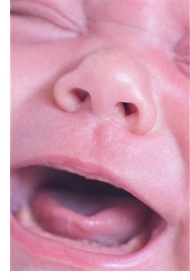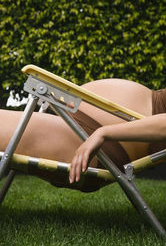The second week of pregnancy picks up where the first week left off. Implantation is completed in the second week of development. Implantation is crucial for a successful pregnancy because if the fetus can’t implant, it will not continue to be viable.
Potential Health Risks
Like the first week, during the second week the baby is not susceptible to any nutritional issues. This means that if the mother is not eating right or taking care of herself, it is still too early in development for these factors to harm the developing baby. However, this doesn’t mean that the fetus is immune to all harmful factors. During week two the baby is susceptible to radiation induced birth defects. This type of risk factor can happen from having an MRI or an x-ray done. This is why technicians are required to ask women if they believe that they could possibly be pregnant.
This is to protect a developing pregnancy from a wide range of potential birth defects. Radiation induced birth defects can cause spontaneous miscarriage, cataracts, inhibited skeletal growth, mental retardation, microcephaly, and other various birth defects.
Development and the Primary Germ Layer
At this stage in development, most women still don’t know that they are pregnant. They might have experienced some light bleeding associated with implantation and mistook it for a light menstrual cycle. The second week embryo is called a gastrula. The second week sees the beginning of the placenta formation and the amniotic fluid. During this week the cells form the embryonic disk with a yolk sac that develops on the underside of this disk. The yolk sac helps form blood cells and will eventually help with sex cells. This embryonic disk starts to develop into different layers.
There are two distinct layers by the end of the second week, the outer ectoderm and the inner endoderm. These terms might not seem like much at the moment, but they are crucial to healthy development of the embryo. The ectoderm, endoderm, and a middle layer called the mesoderm, make up what is known as the primary germ layer.
This is the groundwork for tissue development of the organs, through a process called organogenesis. This is the stage in development when the stem cells start to differentiate into different types of cells. Remember that stem cells are like blank slates, they have the capacity to become any type of cell in the human body. The primary germ layer is vital to healthy development because each layer is responsible for a different type of tissue development.
Ectodermal Cells: These cells will eventually become part of the central nervous system, epidermis, nails, hair, special sensory organs, and the inner lining of the mouth.
Mesodermal Cells: These cells will eventually become muscle tissue, bone marrow and bone tissue, blood, blood vessels, lymphatic and circulatory vessels, inner reproductive organs, kidneys, and the inner lining of body cavities.
Endodermal Cells: These cells will eventually become the inner lining of the digestive tract, the respiratory tract, the urinary bladder, and the urethra.



